
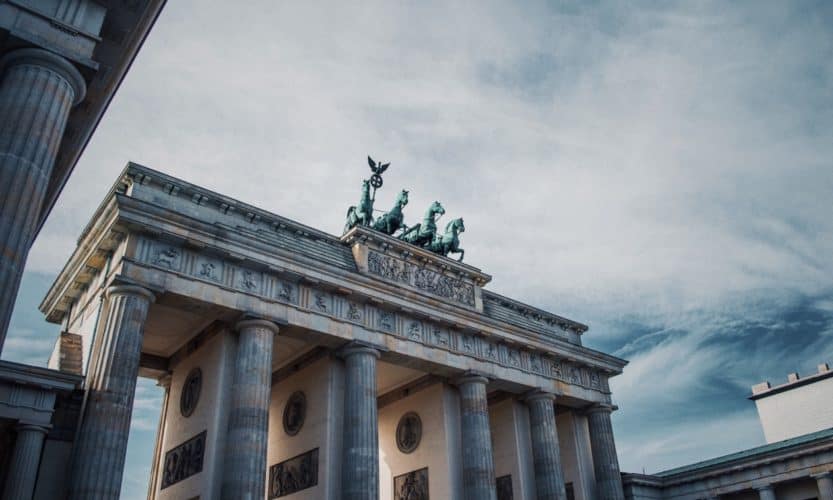
Berlin is the EU’s biggest city and the capital of Germany, and while that may lead you to believe that it will be expensive to visit, nothing is further from the truth. There are plenty of free things to do in Berlin, and I’m here to show them to you.
Before you go any further, take a look at my 3-day Berlin solo itinerary.
Now, let’s take a look at those free Berlin activities!
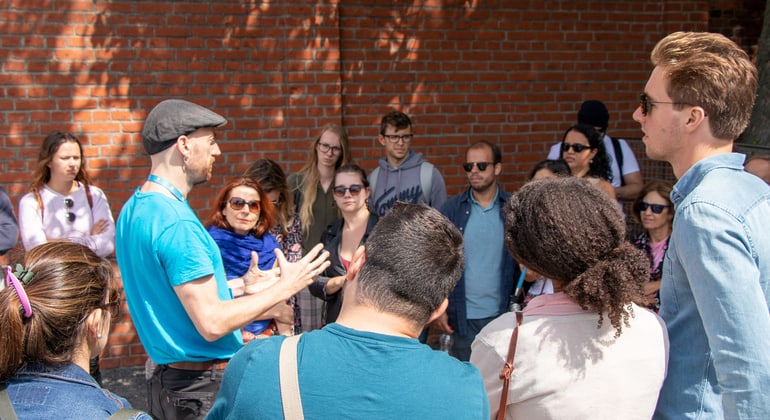
One of my favourite free things to do in Berlin — or in any city, for that matter — is to join a free walking tour.
These tours are usually guided by locals, who will show you things you’ll never find in the guidebooks.
And the best part is, there are so many different kinds of free walking tours in Berlin that you’ll be sure to find something you’re interested in.
Street art? Berlin highlights? Cold War? Whatever it is you’re looking for, chances are you’ll find it in Berlin.
Do keep in mind that free walking tours are often tip-based, meaning that they won’t be completely free.
Tempelhof was Berlin’s main airport until 2008, when it was closed and flights started operating from the city’s other airports, Tegel and Schönefeld, instead.
Today, Tempelhof Field (the runway and its surrounding area) have been converted to a public park where locals go jogging or rollerskating, or even share a picknick on a warm summer day.
More information: Tempelhofer Feld
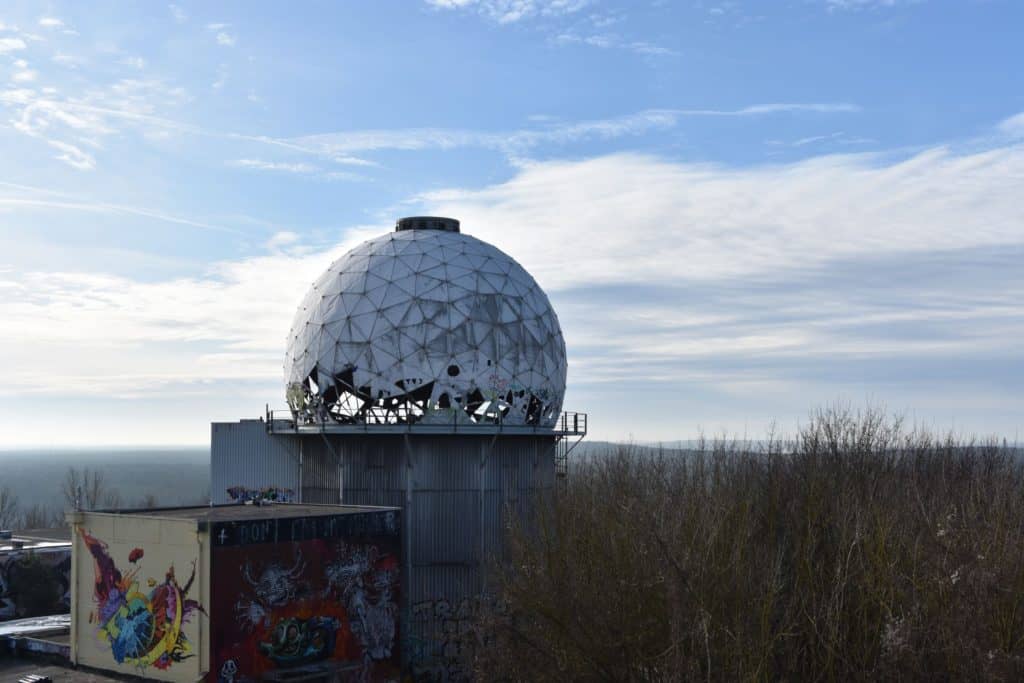
One of my favourite things to do in Berlin – as in any other city, to be honest – is to find some little-known, abandoned buildings and explore them. And, as you might have guessed, Teufelsberg is one of those.
Related: Why I visited an abandoned children’s hospital in Berlin
Teufelsberg is an abandoned spy station on a man-made hill, which has been turned into a street art sanctuary.
You’ll have to face a little bit of a hike (which took me about 30 minutes) and there’s a small fee (€5,50) to enter the grounds, but it’s more than worth it.
Insider tip: don’t bother trying to find a way to climb the towers and get to the domes. It can’t be done, unless you want to risk your life.
More information: Teufelsberg
If you’re ever looking for free things to do in a new city, a safe bet is always to find a cool neighbourhood and walk around for a few hours.
In Berlin, one of those neighbourhoods is Bergmannkiez, a small area in the southern part of the city with charming cobble-lined streets and unique shops and bars to explore.
Some possible highlights for your visit to this area are the Marheinekeplatz flea market, Another Country bookstore, PICKNWEIGHT vintage kilo store and Marheineke Markthalle.

The East Side Gallery is, without a doubt, one of the most popular and best free things to do in Berlin.
As you may or may not know, the East Side Gallery consists of a series of graffiti murals painted directly on remnants of the Berlin Wall.
Fun fact: with its length of 1,4 km, the East Side Gallery is often considered to be the world’s biggest (and longest-standing) free open-air art gallery.
More information: East Side Gallery
As a city that flawlessly combines historic facades and futuristic buildings, Berlin has plenty of impressive architecture for you to discover.
So why not organise your own self-guided architecture walk?
For the specifics on what to see on your walk, I’ll let Julie from The Gap Year Edit do the talking in her article (linked below).
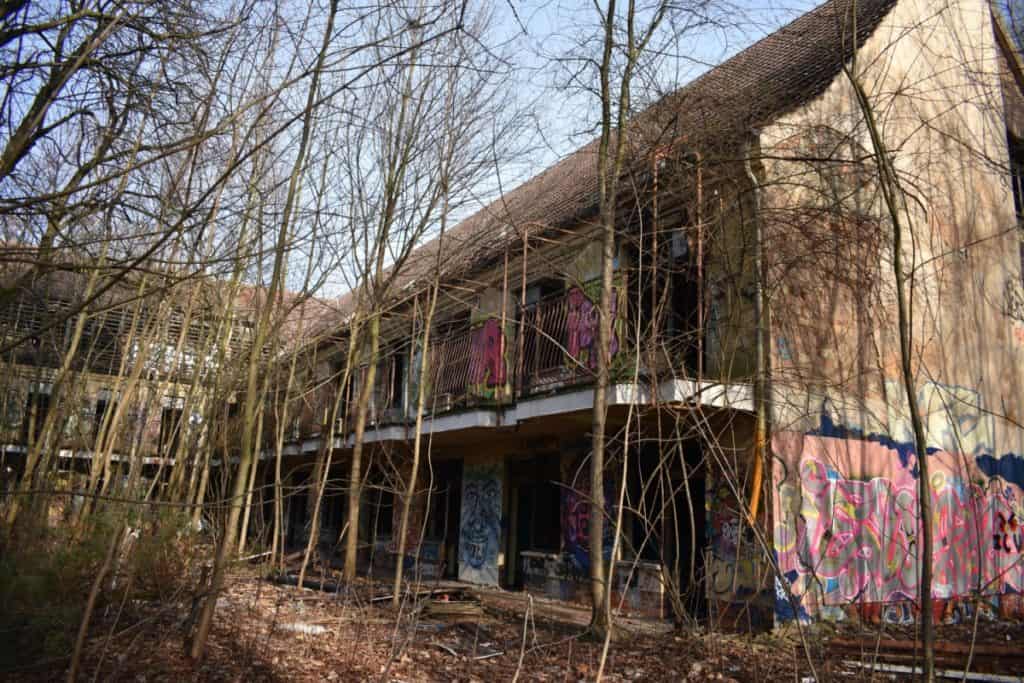
Yeah, I know. It’s a little out there. When you’re looking for free things to do in and around Berlin, your mind probably doesn’t race to an abandoned children’s hospital.
But you should at least consider it.
I did it when I was travelling solo in Berlin, and it turned out to be one of the most exciting things I did there.
(It was also one of the scariest things I’ve ever done, but let’s not talk about that right now)
Here’s some more information about how I did it, and how you can do it too:
Arts and culture are a very popular area for many cities regarding free things to do. Of course, Berlin is no different.
One of my favourite artsy spots in the city is Urban Spree, a free gallery where exhibitions, workshops, concerts and live events take place.
The exhibitions on display at Urban Spree feature contemporary art by modern artists – both German and international – and usually run for about one month.
More information: Urban Spree

The Holocaust Memorial is one of the most-visited monuments in Berlin, and for good reason.
This elegant installation serves as a humble reminder to the millions of murdered Jews and their suffering in concentration camps in and around Germany during World War II.
Additionally, an underground information centre holds the names of over 3 million Jews who lost their lives in the Holocaust.
More information: Memorial to the Murdered Jews of Europe
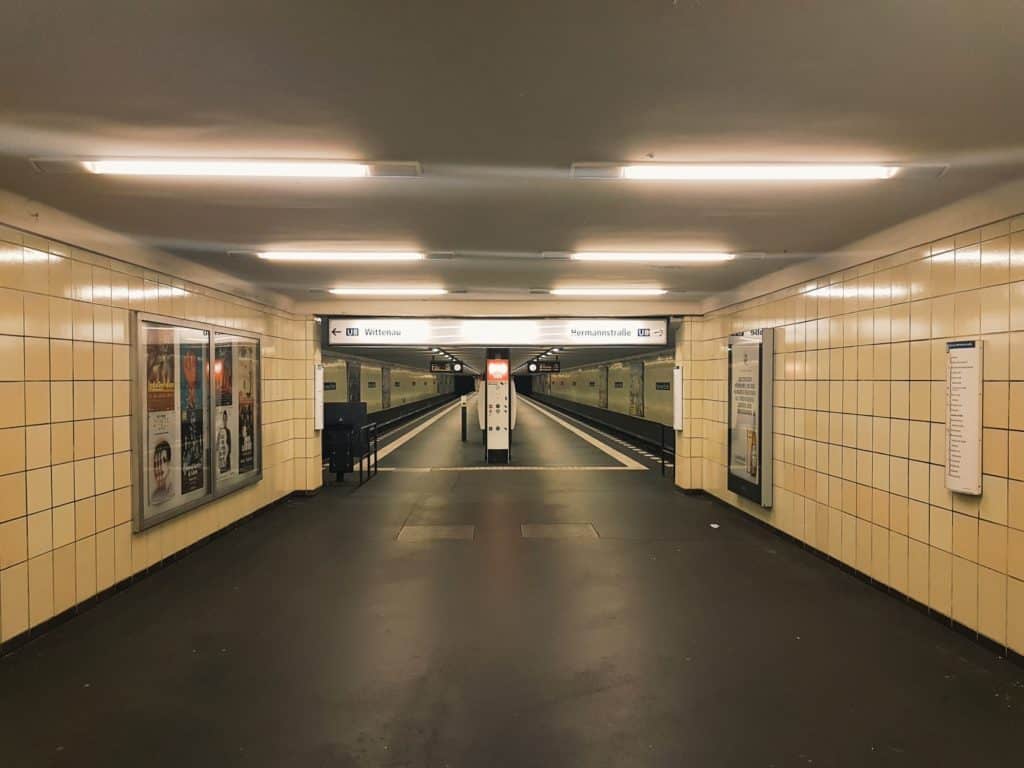
One of my favourite free things to do in any destination is just walking around without having a specific destination in mind.
Let the cobbled streets envelop you, lose yourself in tight alleys and big shopping streets. Take in the atmosphere.
It doesn’t have to be a whole day, either. Just take an hour or two and go where the wind takes you. You’d be surprised at what you’ll discover.
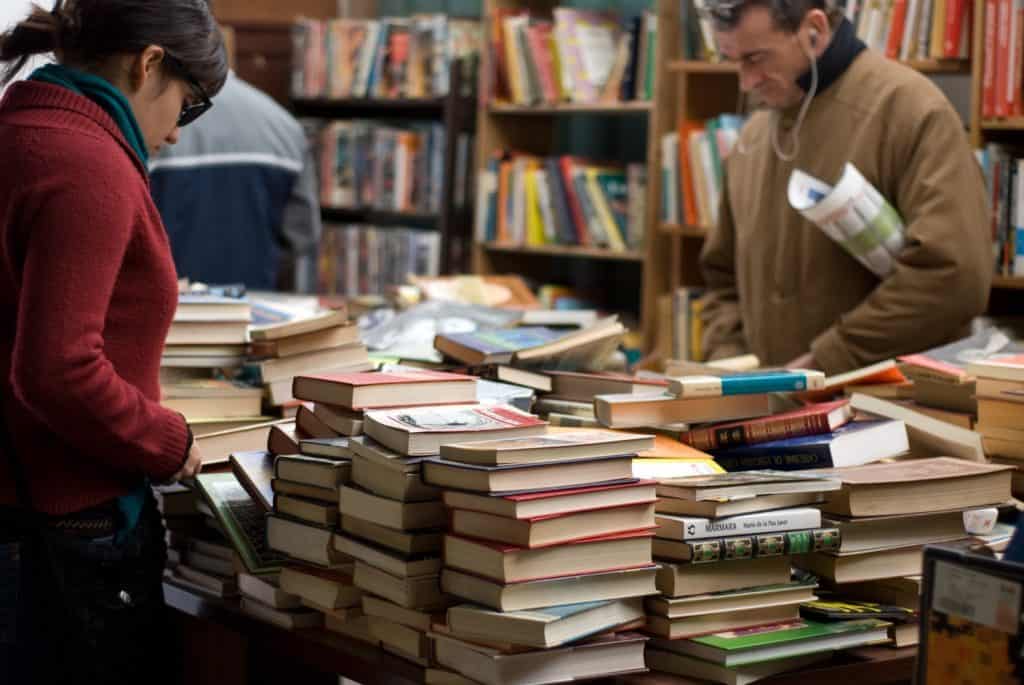
If you’re someone who gets joy out of hunting vintage posters, collecting stamps or hoarding war memorabilia, Berlin really is the place to be.
Since the city’s flea market culture is hardly a secret, you could possibly spend your entire holiday in Berlin browsing its many flea markets.
The biggest and most famous flea market in Berlin is at Mauerpark, but that’s definitely not the only one worth checking out.
Read this article about nine awesome flea markets that aren’t Mauerpark by the people from EXBERLINER.
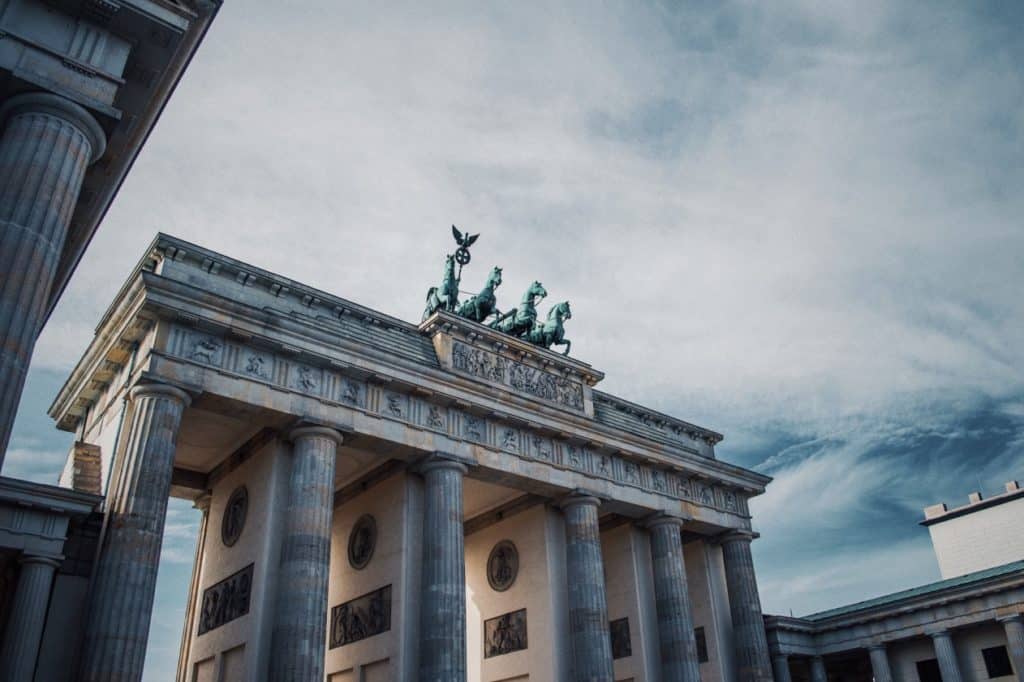
For architecture and history nerds, monuments like the Brandenburg Gate (Brandenburger Tor in German) are a sight to behold.
Constructed in 1791 on the orders of Prussian king Frederick William II, it has been the scenery for many significant events from German history.
Today, the Brandenburg Gate is considered a symbol of both the stormy history of Germany and Europe and unity and peace across the European continent.
More information: Brandenburg Gate
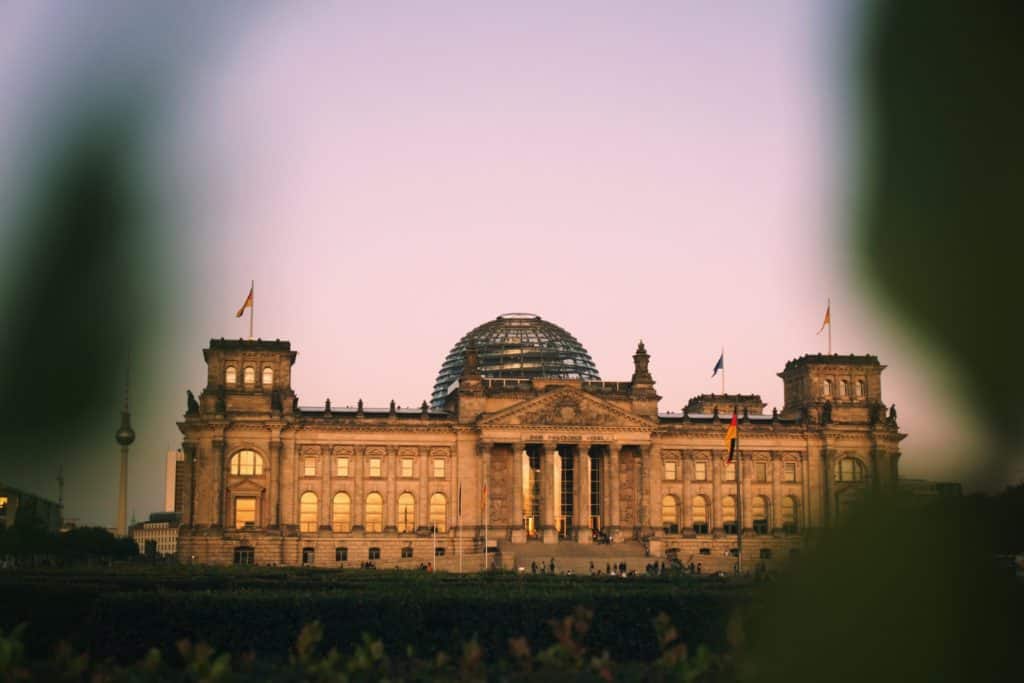
One of the city’s most historically significant buildings is the Reichstag, which has housed the German parliament since 1999.
The building stands steady in the Berlin skyline as a symbol of European and German democracy.
For visitors, one of the most interesting things to do is to climb up to the roof of the Reichstag building and enjoy the free panorama. Keep in mind that you have to register online to climb the building. (But it’s completely free!)
More information: Reichstag Building
Berlin’s Museum Island (Museumsinsel in German) is home to five museums, where you can find impressive collections besides the eye-catching exteriors of the buildings.
Unfortunately, you’ll need to purchase a ticket to actually get into the museums, but you can freely walk around Museum Island without a ticket.
One ticket costs €19 (€9,50 for reduced price tickets) and will get you into the following museums:
More information: Museum Island
Given its status as one of the most-visited war-related places in Berlin, Topography of Terror is definitely a documentation centre worth visiting.
The aptly-named Topographie des Terrors exhibition serves as a humble reminder to the terrors of the Second World War, including information about the Gestapo, the SS and the Reich Security Main Office.
Admission to the site is free and every exhibition is fully accessible for people who use wheelchairs.
More information: Topographie des Terrors
Note: the information in this post is loosely based on a Twitter thread with free things to do in Berlin that I made last year, just after I came back from my own trip to Berlin.
PIN IT!
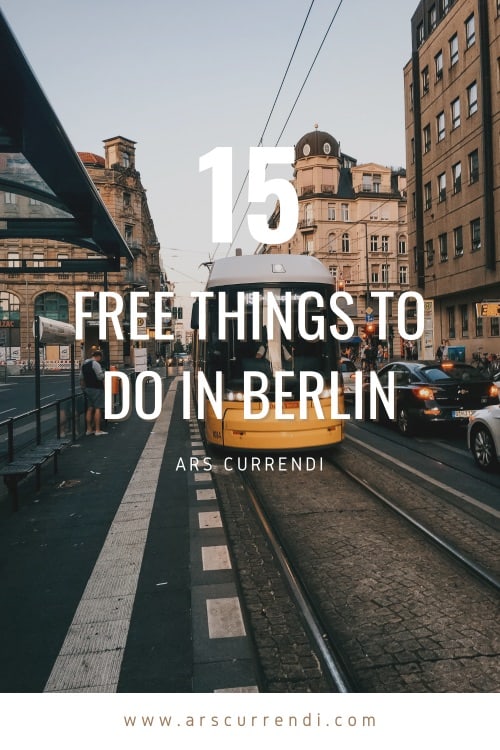
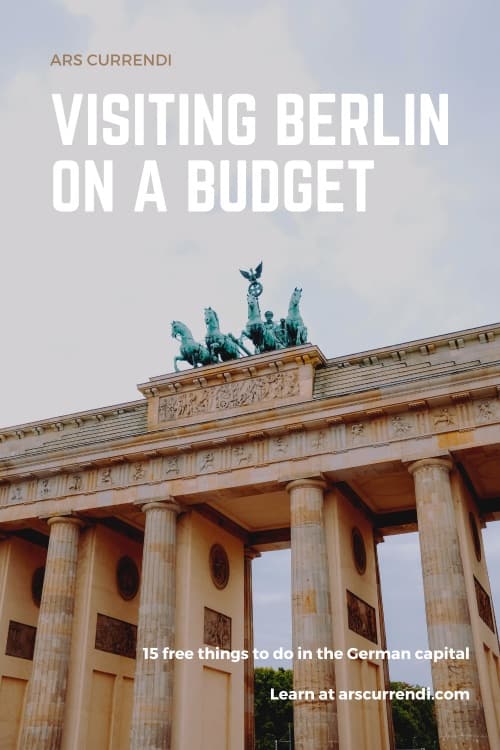
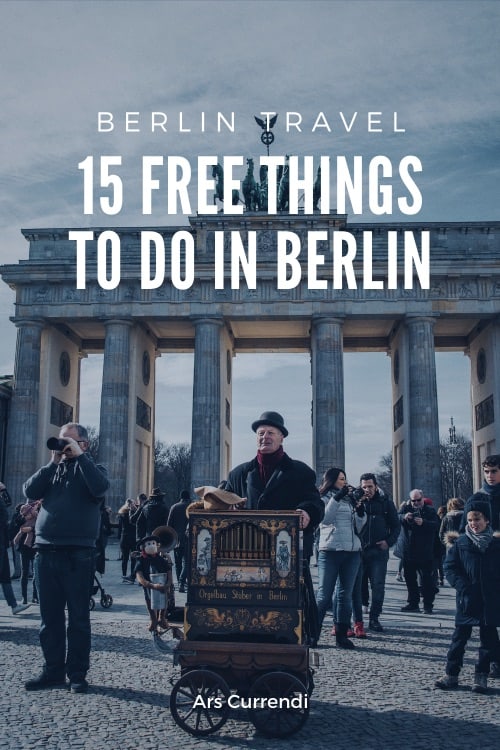
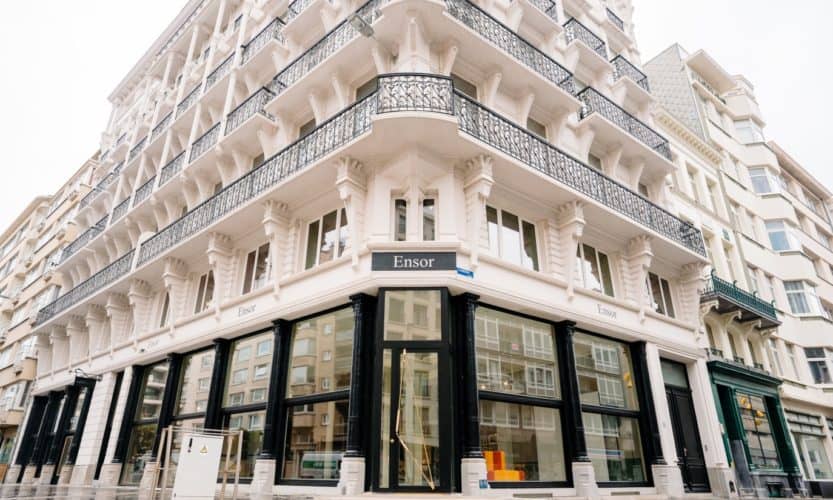
Recently, the James Ensor House in Ostend officially reopened its doors to the public in a fully renewed experience centre. This wholly refurbished experience will shed new light on James Ensor’s life, his artworks and his love for the city where he lived until he passed away: Ostend.
In the interest of discovering your own country, I decided to visit this new James Ensor House. In this post, you will read everything about my experiences; the good, the bad and the ugly.
Spoiler alert: there’s a whole lot of good and almost no bad or ugly.
Skip ahead:
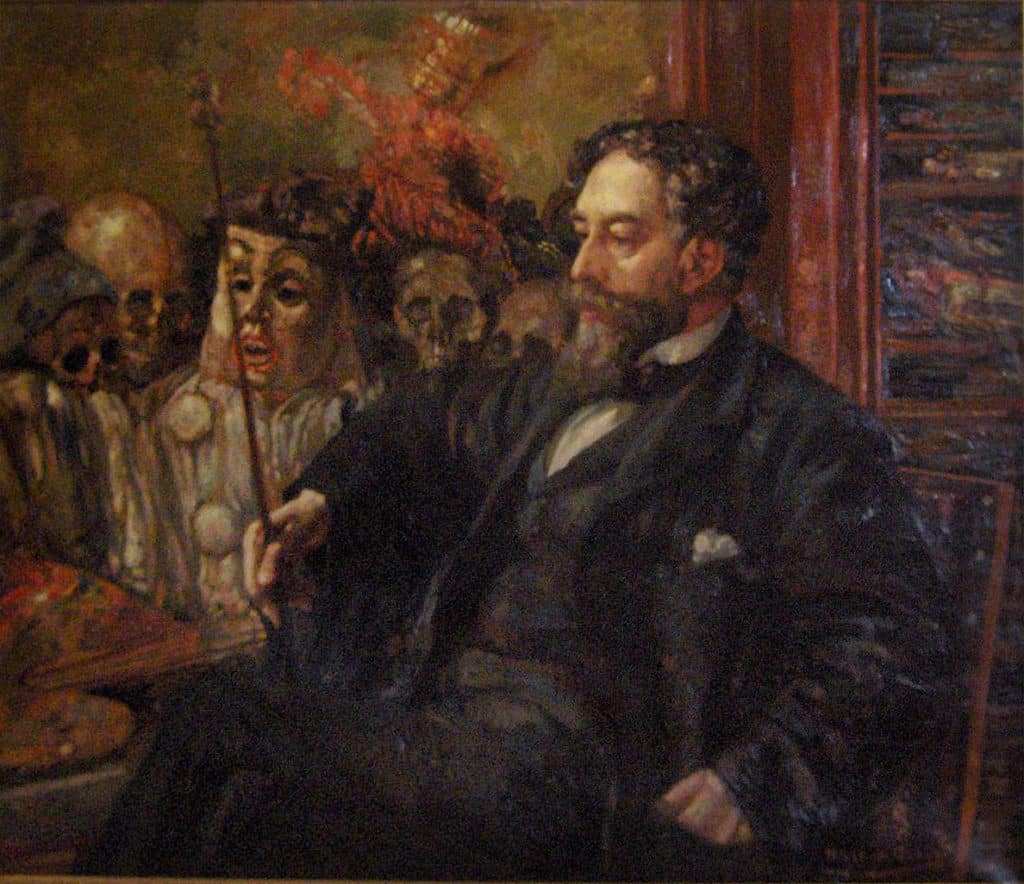
Since I know you didn’t come here for a history lesson, I’ll just give you the quick summary.
James Ensor was born in 1860 to English parents. He initially studied engineering, but quickly lost interest and left school at the age of 15 to pursue his passion for art. Eventually, he would go on to study at the Académie Royale des Beaux-Arts in Brussels, but he didn’t care for the rules and conventions of the Academy.
After leaving the Academy in 1880, Ensor started using the attic of his parents’ house as his art studio. In his artwork, nothing is off-limits – Ensor made his own rules. Critics regarded much of his work at this time as scandalous.
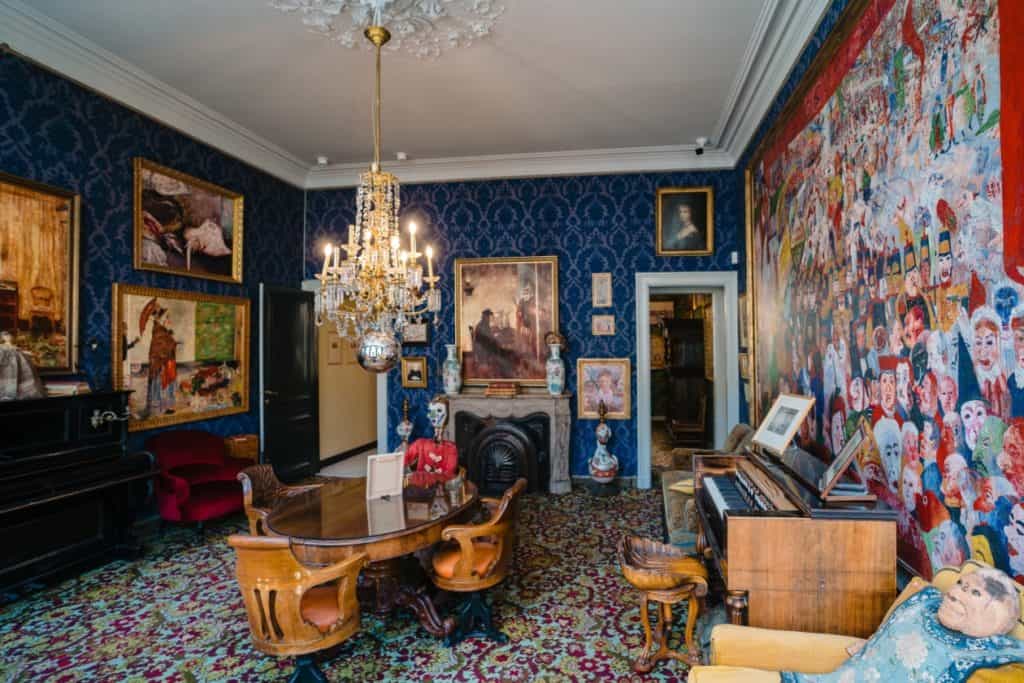
In 1888, Ensor painted his most famous work of art: Christ’s Entry into Brussels in 1889.
Ensor died, unmarried, at the age of 89 in Ostend.
Today, his works of art are on display in many leading museums around the world, including the Rijksmuseum (Amsterdam), the Musée du Louvre (Paris), the Museum of Modern Art (New York) and the J. Paul Getty Museum (Los Angeles).
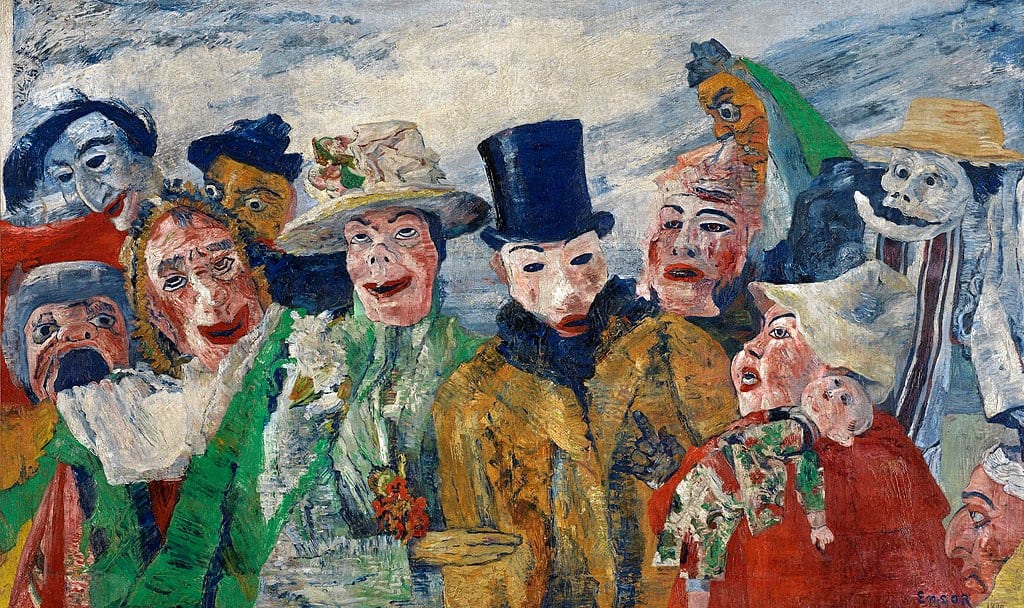
Ensor’s paintings are easy to recognise by the depiction of skeletons, carnivals, puppetry and masks (which were inspired by the masks sold in his mother’s gift shop).
These works of art can best be described as eccentric and rebellious, a perfect representation of his life in and of itself. Through his art, Ensor criticised the establishment and expressed his outrage at concepts like hypocrisy, abuse of power and injustice.
In the late 19th century, Ensor eventually came into his most creative period. Although he was an atheist, Ensor often referred to and resonated with the suffering of Christ in his paintings.
James Ensor was, and for many remains to be, one of the unsung heroes of modern art. He was one of the driving forces behind artistic styles such as expressionism and surrealism.
If you call the James Ensor House a museum, I guarantee that you’ll get a few dirty looks from the people who work there.
I’m just saying.
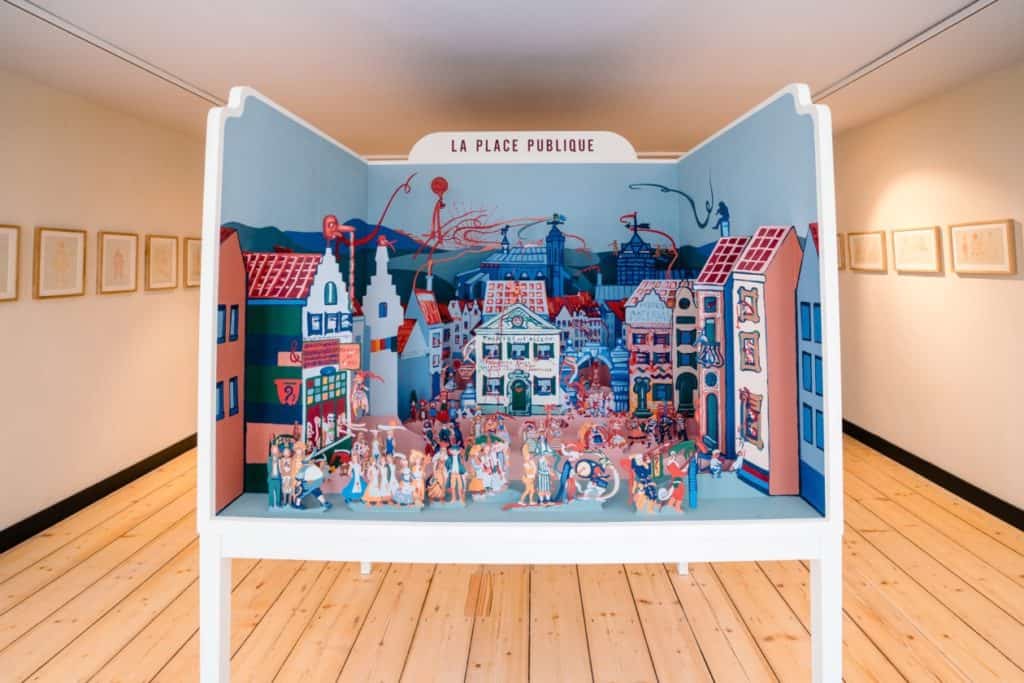
The new James Ensor House is an interactive experience centre where you can learn about Ensor’s life in a new and exciting way.
Originally, the Ensor Museum was a small museum dedicated to the artworks of James Ensor, but a recent renovation and purchase of the neighbouring building gave this place a major upgrade.
Today, a tailor-made audio guide walks you through five rooms in the James Ensor House, each one dedicated to one specific aspect of Ensor’s life and art. Also included are accurate reconstructions of the house where Ensor lived most of his life, with authentic furniture and artworks.
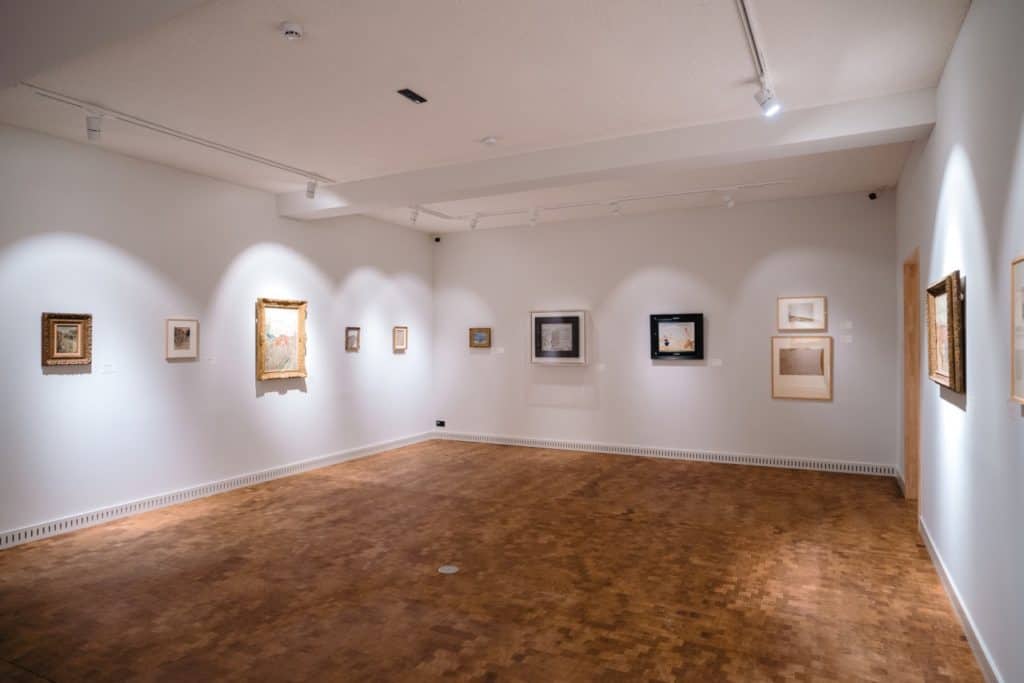
Your visit comes to an end in the museum itself, where real works of art painted or sketched by Ensor are on display.
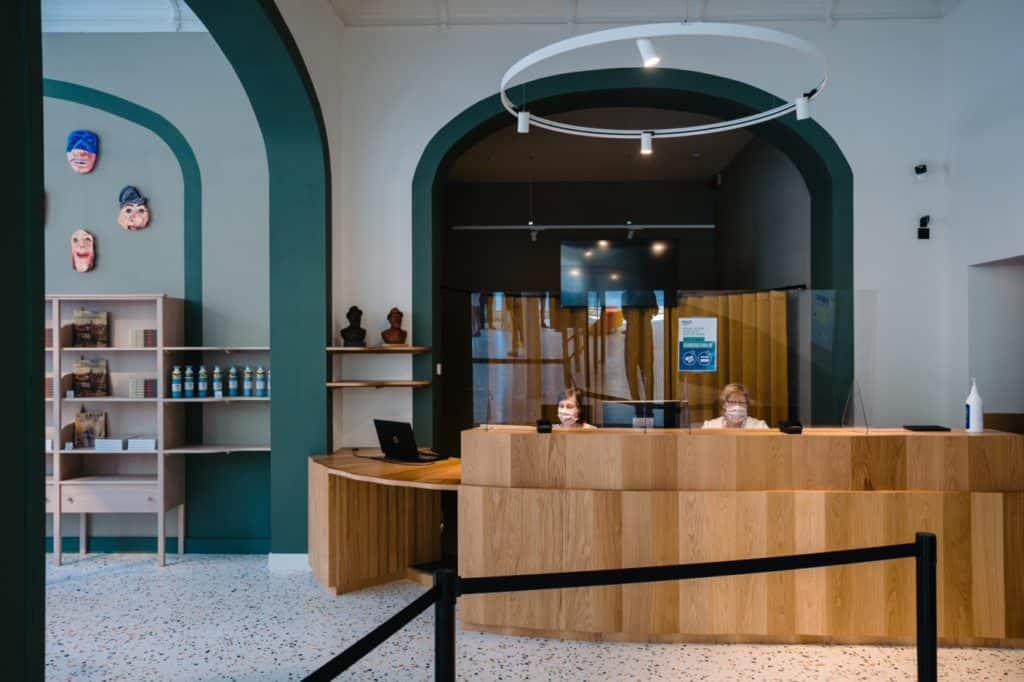
There are a few different ways to get to the James Ensor House:
If you’re not coming by train or by car, pop the following address into your favourite navigation app and follow the directions.
Vlaanderenstraat 29, 8400 Oostende
Since James Ensor spent most of his life living in Ostend, it should come as no surprise that the city decided to highlight this artist with other initiatives than the James Ensor House.
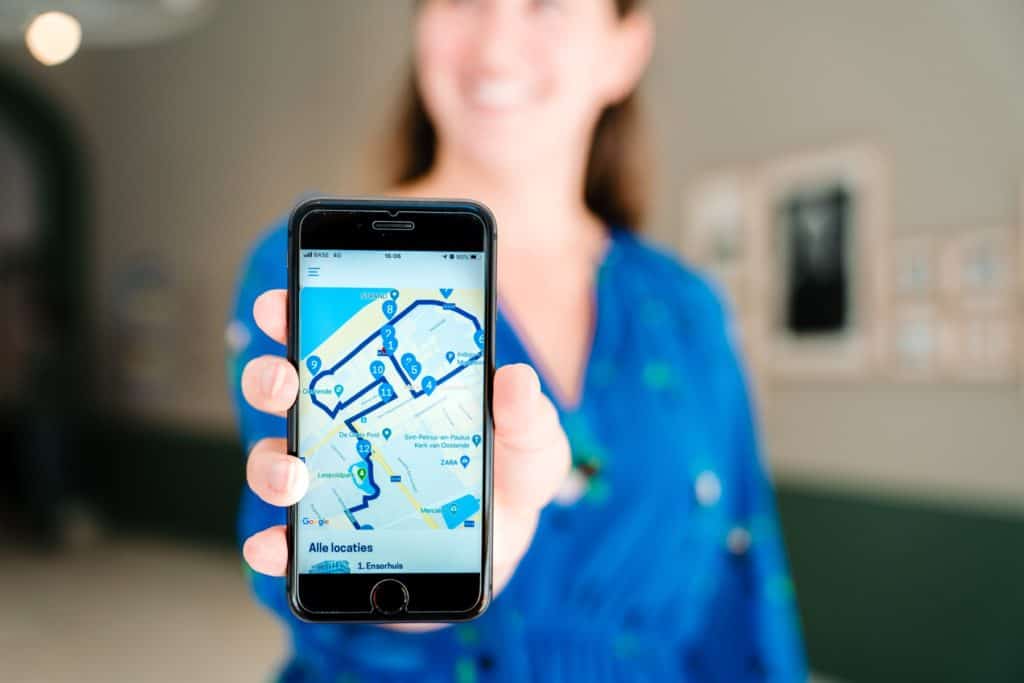
Along with the opening of the James Ensor House, Visit Oostende developed a brand new Ensor-themed walk that takes you to all the locations that played a major role in the artist’s life.
The app that accompanies this walk enables visitors to see the City by the Sea through Ensor’s eyes.
The tour is guided by Ensor himself, who talks about his own tumultuous life, his many friends and the city that stole his heart.
Best of all: the tour is free for anyone who purchased a ticket to the James Ensor House. However, if you only want to do the tour, you’ll have to pay a one-time fee of €5,49.
The app is available in five languages (English, Dutch, French, German and Spanish) and is free to download in the App Store.
Related: The 20 best apps for solo travellers
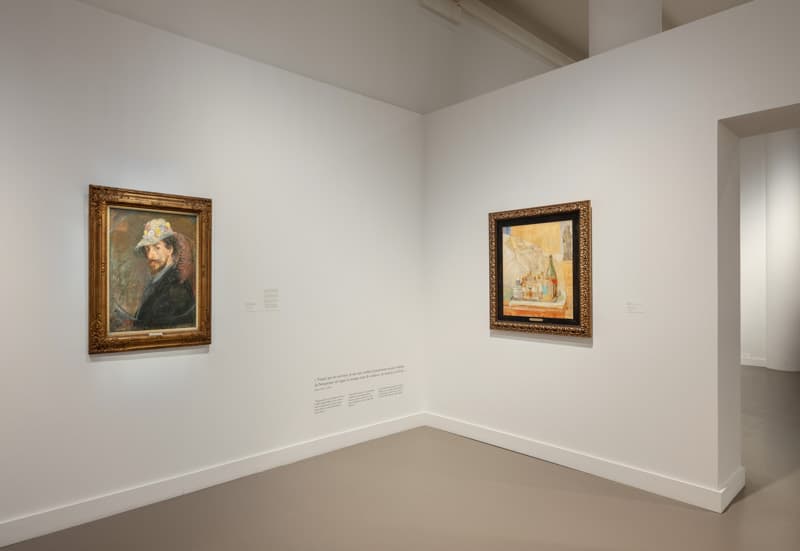
Mu.ZEE (Ostend’s museum of modern art) has an entire wing dedicated to the works of James Ensor and Léon Spilliaert, another renowned painter from Ostend.
The exhibition, which is titled Two Masters of Ostend, aims to let artworks by Ensor and Spilliaert take the visitor back in time, to the Ostend they knew and loved.
Every work of art on display in this exhibition is accompanied by one or more anecdotes, recounting the lives of people like Edgar Allen Poe and Willy Finch.
If you’re still looking for more information for your visit to the new James Ensor House, check out these websites:
PIN IT!
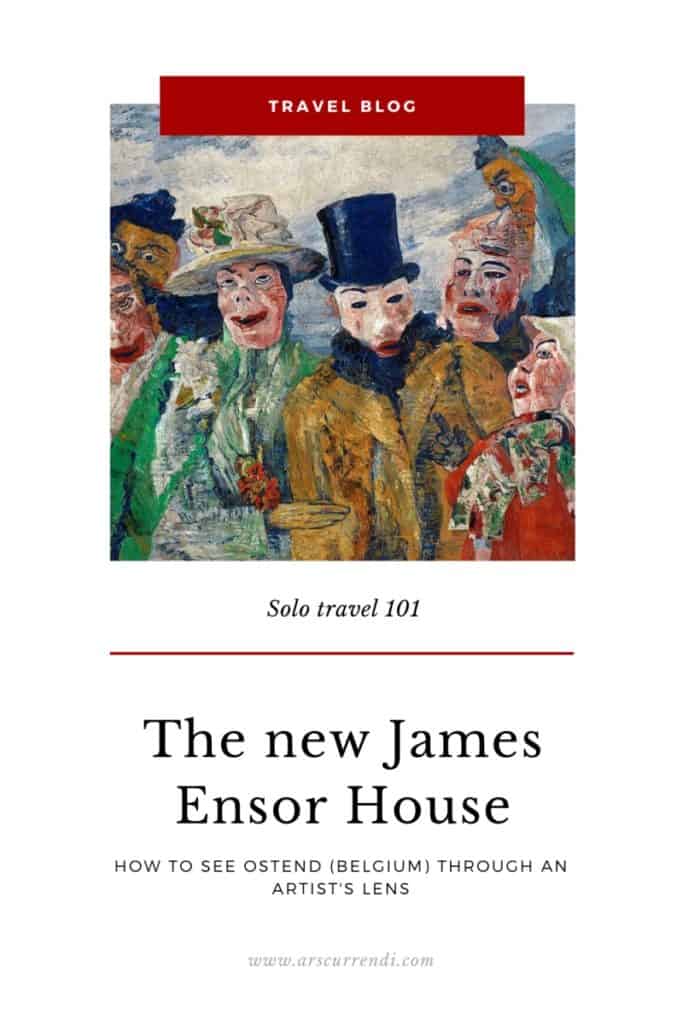
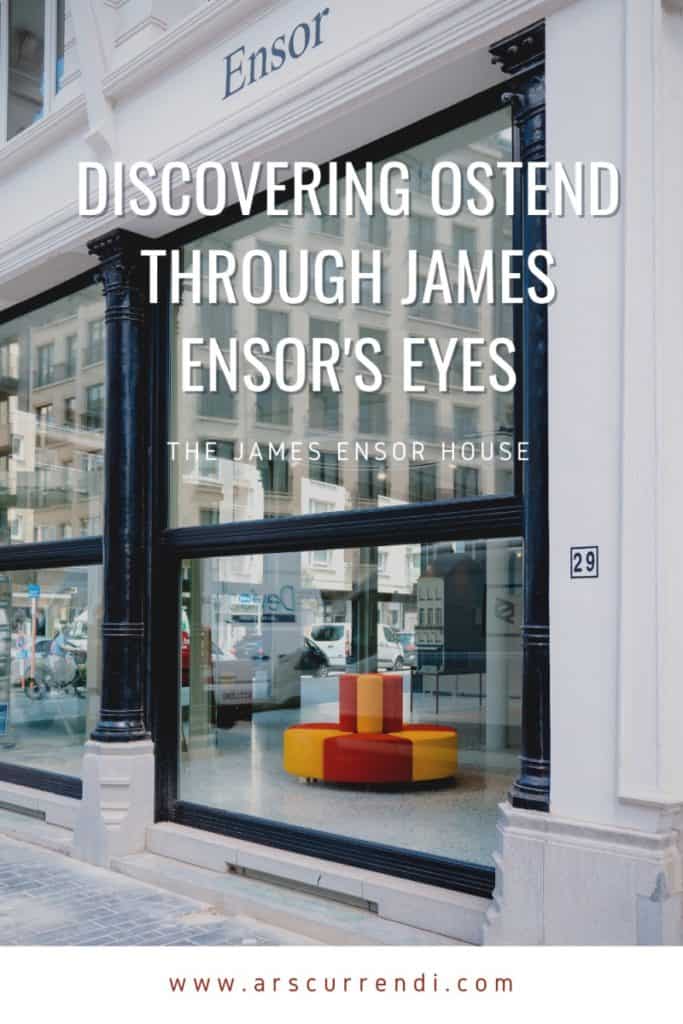
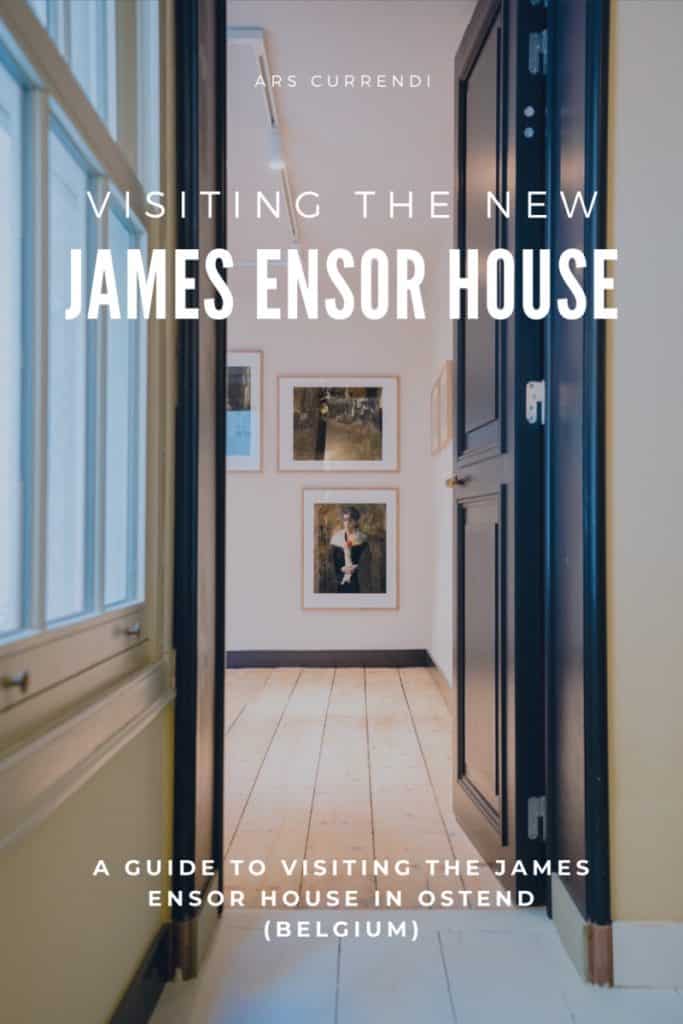
Image credits:

It’s a scary thing to head off on your next big adventure with a group of strangers. But still: the people who come back from their first group tour and still find themselves among people they don’t know are few and far between.
Today, I will give you some insight into what to expect on your first group tour.
If you’re going on a group tour, you’ll get to share experiences with strangers, which might seem like a very intimidating thing – at first.
However, you’ll have a competent group leader with you, who will take care of nasty situations before you even know they’re there.
Anyway, here are some things you need to know before going on an organised group tour.
Skip ahead with the following links:

Before you can book your first group tour, there are a few things you need to look into.
(FYI: My first group tour was this road trip through Rajasthan)
It’s always in your best interest to pack light, especially if you’re going on a trip where you’ll be travelling between cities.
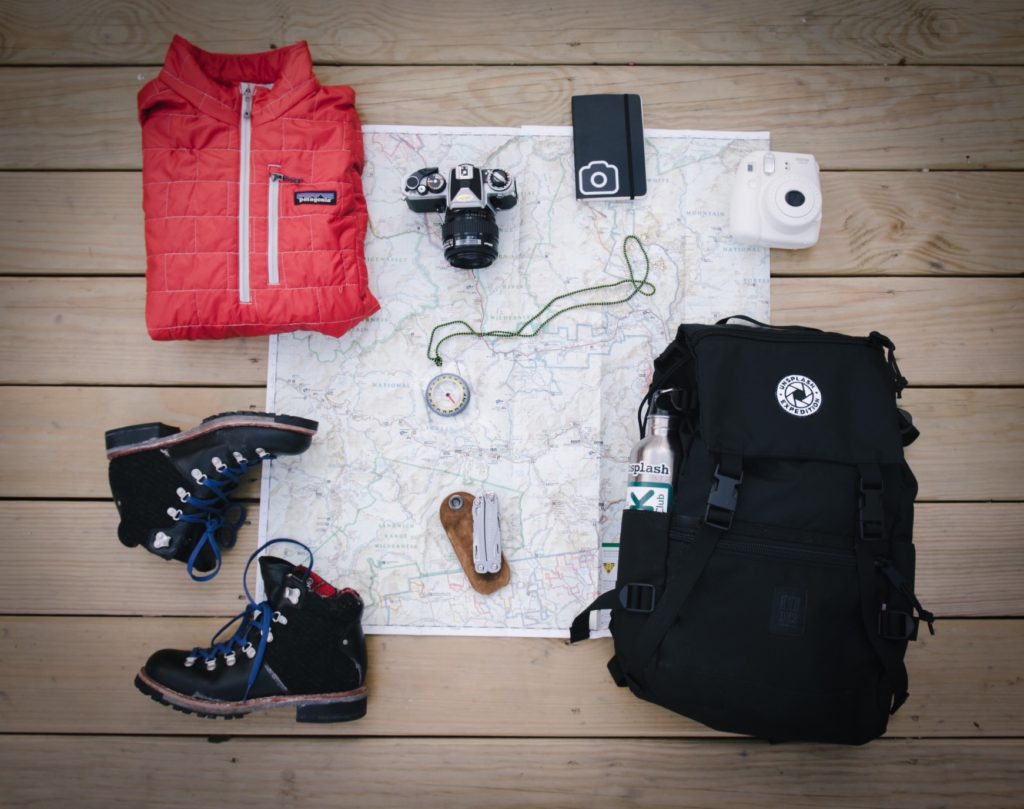
It gives you more manoeuvrability, it’s better for your body and it will make your trip much more pleasant.
And, although it’s not always possible to travel carry-on only, you can still put in some effort to make your checked bag as light as possible.
More detailed guide: How To Pack Light: The Ultimate Guide
First of all, here are some things you shouldn’t pack:
Now, on to some actual tips for packing light:
On a group tour, you usually want to see and do as many things as possible. Inevitably, this also means that you’ll be doing a lot of travelling between places.
Bus, train, subway, rickshaw, …
The sky is the limit when it comes to transportation options.
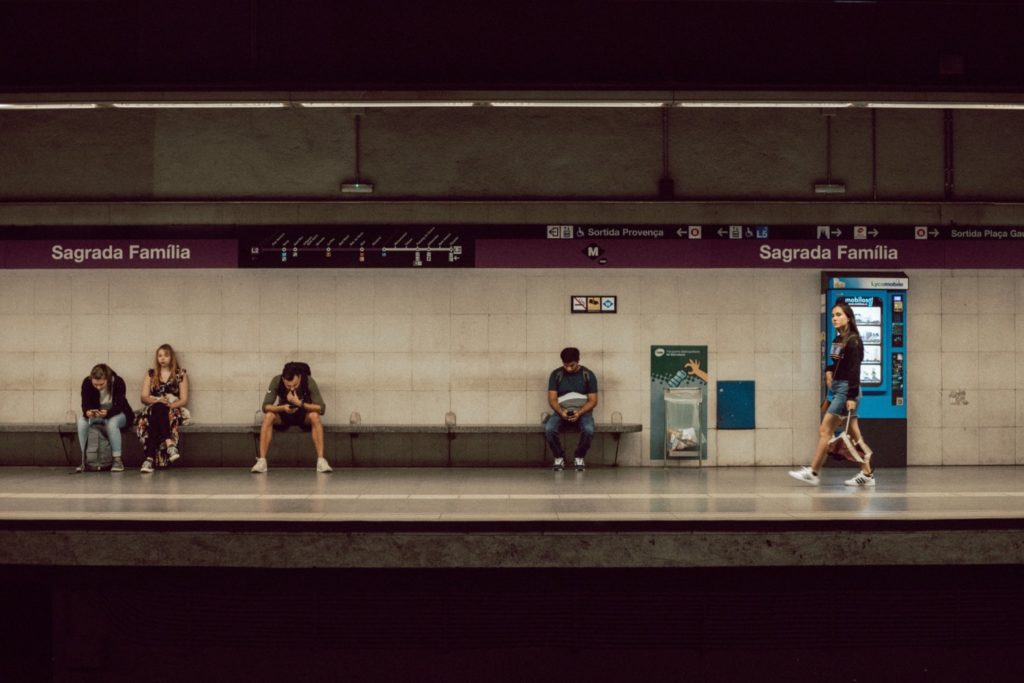
Keep in mind, though, that travel time on a group tour is not necessarily wasted. Since you’re in it together with your whole group, you might as well take this opportunity to get to know your fellow travellers.
After all, why can’t the journey be part of the charm of your trip?
Rules are inherently in place to be followed.
And no, I probably won’t snitch on you if you forget to use your indicator lights once when turning right, but I do believe that the rules are there for a reason.
It’s no different when you’re on a group tour. The rules were created by your touring company to make sure that everyone involved has the best possible experience, and you don’t want to be the one spoiling the fun for everybody.
Just follow the damn rules.
The odds of everybody in your group becoming a friend for life are admittedly quite low. But hey, that’s not an issue. The whole thing with group tours is that, well, you’re in a group.
As long as you can find a few people you can vibe with, you’ll be fine. And, honestly, it’s very unlikely that you’re not going to find anybody with similar interests on a group tour.

Just take the first part of your tour to get to know everyone and find out where the potential friends are, and then spend the rest of your time actually becoming friends.
Check out my tips on making friends as a solo traveller – don’t worry, many of them also apply to group travel.
According to psychological research, most people will behave differently than they usually do when they’re thrown into a new group.
You might be a bit louder, a bit more reserved or a bit more eccentric than you are in everyday life.
That’s why it’s important not to judge people by your first impressions, but rather to wait a few days before you can really find out what you think of them.
Don’t rule out potential friendships because you didn’t like the way the other person acted on day one.
When you’re on a group tour, you often experience extraordinary things. Things you wouldn’t experience at home (like visiting an abandoned children’s hospital or going on a camel safari).
And that’s exactly the reason why your first group tour is the perfect moment to start trying new things.
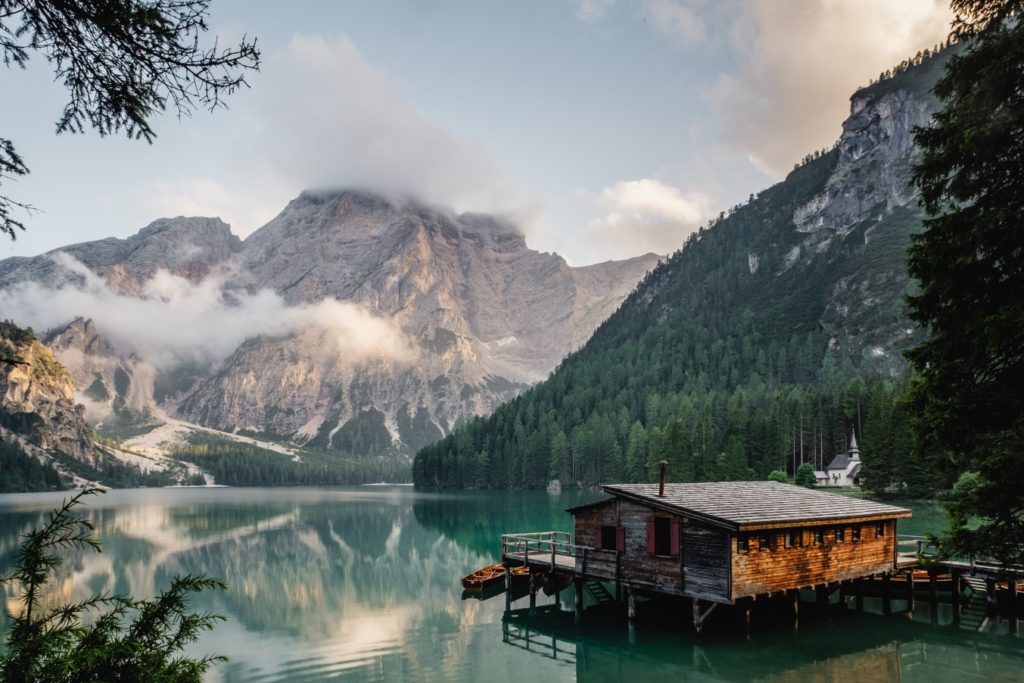
Eating exotic meat? Jumping out of a plane? You might say no to those things when you’re in the safety of your comfort zone, but you should reconsider that answer while you’re abroad.
As I mentioned above, you won’t become BFFs with everyone on your first group tour. Take it from me.
One thing you can do, however, is try to find common ground with the people in your group. The truth is, you probably have more in common than you think.
You picked a certain trip based on the activities, the destination, and a whole array of other factors.
Well, I’m going to let you in on a little secret. Your fellow group members did exactly the same thing.
So the fact that you eventually picked the same trip should already tell you something about the kind of person they are.
And that’s exactly why you automatically have common ground with people on a group tour, even if it might not seem like it at first.
Depending on the organisation behind your trip, some things may or may not be included in the price of your group tour.
Usually, tour operators include things like local transport and accommodation in the price you pay for the trip and recommend you set apart a certain amount of money for things like food, drinks, activities and entrance fees.

Before you book your group tour, make sure you know what you’re paying for upfront and what you’ll still have to pay on the trip itself.
On a group tour, it’s not uncommon for the people who are travelling together to become a tightly-knit group in a short amount of time.
And, very often, reunion plans are already being made while you’re still together.
But unfortunately, those plans too often end up being the furthest you will get, unless there’s somebody in your group willing to put in the effort of getting everyone together again.
You could be that person for your group. I’m just saying.
But still – especially if you’re on a group tour with people from all around the world – you need to be prepared to say goodbye for real when the trip comes to an end.
Now that you know as much about the pros and cons of group tours as I do, you’re more than ready to book one for yourself.
Is there anything you’re still unsure about? Be sure to let me know in a comment or email me and I’ll get back to you as quickly as possible!
PIN IT!
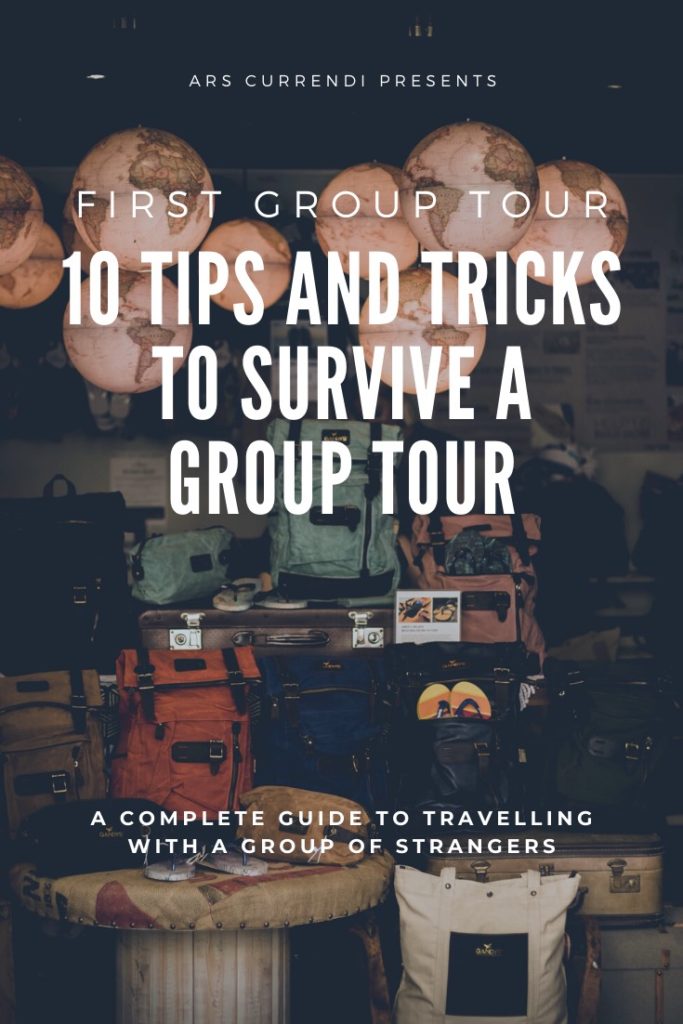
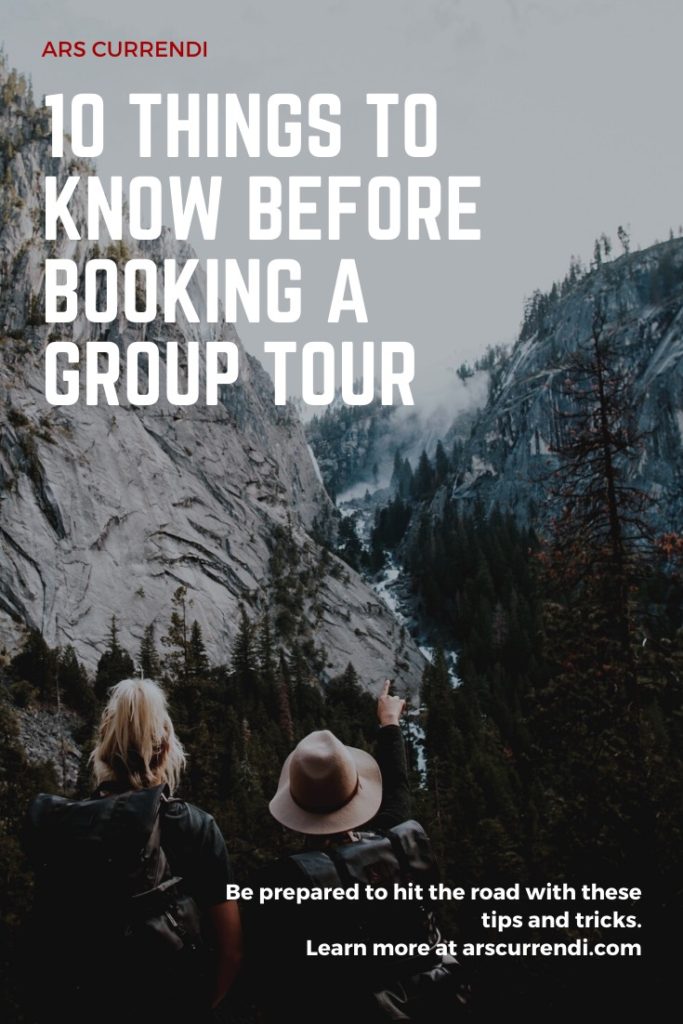

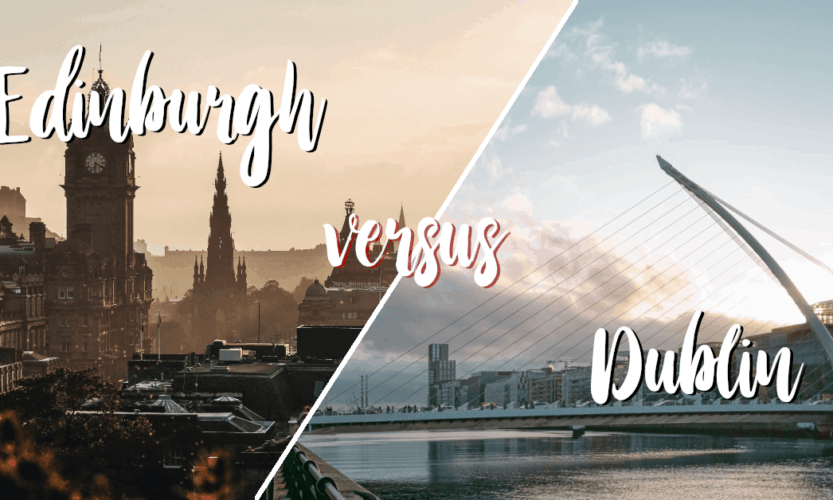
To preface this entire article, I’ll just say this: there is no one-size-fits-all answer to the question ‘Should I visit Dublin or Edinburgh?’. Every traveller is different and wants different things when travelling, so I can’t choose between Edinburgh and Dublin for you. What I can do, however, is list some pros and cons for both and help you come to your own conclusion.
It’s always tough to figure out where you’re travelling to next and to create your travel itinerary, but I am here to help.
Skip ahead to specific sections using the links below:
For starters, check out my dedicated guides to solo travel in Edinburgh and Dublin.
Now, let’s actually compare the two cities in terms of solo travel friendliness.
Dublin was the very first city I ever travelled to by myself, so I have a special relationship with it.
Now, the thing is, I’m not sure if I like solo travel in Dublin because it was my first solo experience or if it’s actually a great city to visit, but I would definitely recommend it.
As for Edinburgh, it’s quickly become one of my favourite cities in the UK — and you should know, I REALLY loved Brighton and London.
There are plenty of things to do, the atmosphere is great and you’ll feel like you went back in time.
The winner: Edinburgh. I feel like the sheer atmosphere in the city is enough to trump Dublin as the best city to travel to by yourself, even though I have more special memories in the Irish capital.
Edinburgh and Dublin are similar in size, and they both have plenty of things to do for travellers. Here’s a quick overview of the most important tourist attractions in both cities.

Dublin:

Edinburgh:
The winner: Dublin. I feel like you could spend more time in Dublin without getting bored, even though Edinburgh is a close second in this category.

In general, architecture in Dublin is nothing impressive. The city’s skyline is rather flat compared to bigger cities in Europe, like London and Rome. That being said, there are some very impressive buildings in Dublin, like Dublin Castle, The Custom House and the Guinness Storehouse.

By contrast, Edinburgh architecture is more reminiscent of its history. By the very ground the city was built on, there are more differences in height than in Dublin. This results in higher, more impressive buildings, although these buildings tend to be less diverse than in the Irish capital.
The winner: Depends. If you’re into history, Edinburgh wins. But if you’re into modern architecture, I’d say that Dublin takes the cake in this category.

Some traditional food you have to try in Dublin:

And then, traditional food in Edinburgh:
The winner: Personal preference. This really comes down to what kind of food you prefer to eat, but I’m personally more inclined to choose Edinburgh.

Nightlife in Dublin is fantastic. The legal drinking age is 18 and many bars, pubs and clubs are sprawled around the city, with a dense concentration in the Temple Bar district.
The bad news, however, is that many clubs in Dublin have a cover charge, often ranging between €15 and €20.
Just because Edinburgh is a city steeped in history, doesn’t mean that there’s nothing else to experience there. There are many nightlife areas in Edinburgh to keep you drinking, singing and dancing until the early hours, including the Royal Mile, Grassmarket and the West End.
The winner: It’s a tie. Again, it really depends on what you’re after.
It must be said: both cities have incredibly friendly locals.

When I was in Dublin, I found that the Irish were more than willing to help out a solo traveller who was struggling to figure something out. Hostel and restaurant staff was also very friendly and helpful.

In Edinburgh, the locals’ willingness to help was very similar. It doesn’t feel weird to walk up to someone in Edinburgh and ask them a question, even if you’ve never met them before.
The winner: Dublin. When I was in Dublin, I never felt like I was strange for being there, which I have felt in other cities.
The whole Dublin vs. Edinburgh debate on pricing is really easy: Edinburgh is cheaper.
Since the average salary in Dublin is higher than in Edinburgh, it stands to reason that many aspects of life are more expensive there.
And that counts for things like housing and electricity, but also for things that affect travellers, like public transport and restaurants.
The winner: Edinburgh.
If you go back through this comparison, you’ll see that Dublin and Edinburgh both got the same number of points.
So, I guess it all comes down to what you’re looking for in your destination.
Do you want a vibrant city with friendly locals, energetic nightlife and plenty of things to do? Go to Dublin.
Are you looking for a weekend away at a city where history and present come together, where accommodation is more affordable and where breathtaking nature is just a stone’s throw away? Head to Edinburgh.
In the end, I can’t decide between Dublin and Edinburgh for you, but I can help you figure it out yourself.
Have you ever been to Edinburgh or Dublin? Did I miss anything or do you disagree with anything? Let me know in the comments.
PIN IT!



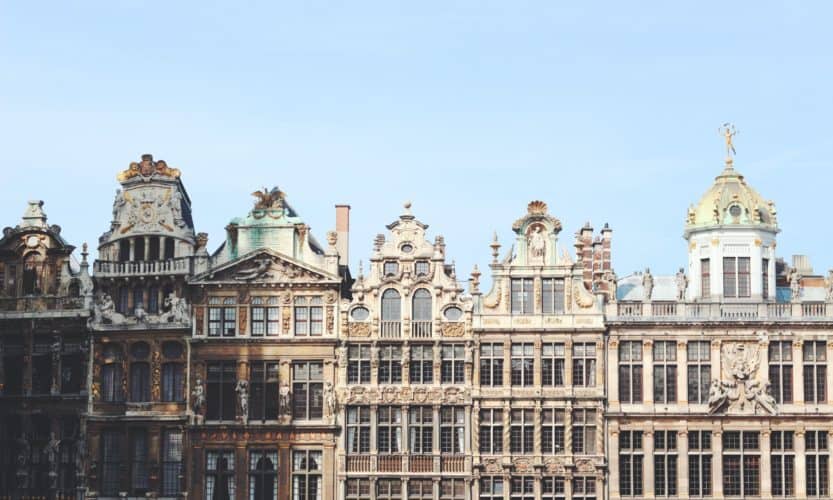
Belgium is a country that is often skipped or used as a stop between other major European cities, such as Paris and Amsterdam. I’m here to convince you that cities in Belgium are worth visiting, too.
Belgium has so much to offer, so it would be a shame to ignore its existence when building a European travel itinerary. We have it all: food that makes your mouth water, beers that have been brewed since the Middle Ages, ancient castles and cobbled streets in medieval cities.
Still wondering why this country is worth exploring? Let me go over some of my favourite cities in Belgium and convince you too.
Skip ahead with these links:
How could I start an article about the best Belgian cities and not mention the big B?
Brussels is Belgium’s capital, and if there’s one Belgian city travellers flock to by the thousands, it’s this one.
And there are some good reasons to add Brussels to your Belgian itinerary. Stunning Art Nouveau architecture, impressive museums and a groovy jazz scene are just a few of the things that might convince you.
Among locals, Ghent is mostly known as one of the major student cities in Belgium. But it’s actually much more than that.
Ghent is vibrant, quirky and welcoming to foreigners. It’s budget-friendly, eco-friendly and child-friendly. Ghent spans the bridge between historical and contemporary, and it does that better than any other city I’ve been to.
And no, I’m not overselling the city. I love Ghent with all my heart, and I would recommend it to everyone who hasn’t been to Belgium yet. (And even to people who have visited Belgium in the past!)
Read more: Ghent City Guide, As Told By A Local
As Belgium’s second-biggest city, Antwerp is still too often overlooked by travellers. And that’s a pity.
Antwerp is, beyond a shadow of a doubt, the Belgian capital of cool. The city is filled to the brim with trendy clubs, unique restaurants, authentic vinyl record shops, interesting museums, and more.
As if that wasn’t enough, strolling through Antwerp is also a treat for architecture lovers. The central station is one of the world’s most revered railway stations and the gems of Art Nouveau, Jugendstil and Neo-Classicism can be found all over the city centre.
Oh, and did I mention that Antwerp is the diamond capital of the world?
Read more: Best Restaurants in Antwerp: The Ultimate Foodie Guide
Another city that is often overlooked by people from outside of Belgium, and even by people who were born here.
Admittedly, there won’t be as many things to do in Charleroi as in other Belgian cities, such as Bruges and Ghent, but what the city lacks in activities, it more than makes up for in character and history.
If you want to venture even further off the beaten path, go for a walk along the city’s canal and discover Charleroi’s history through its (often abandoned) industrial buildings.
Although it is considered one of Belgium’s major cities, you might have never even heard of it if you’re not from around here.
So, when you’re wondering which cities to visit in Belgium, you probably weren’t considering Liège. But you should be.
Liège (or Luik in Dutch) is one of the cultural hotspots of Belgium. There’s a great opera building, a critically acclaimed philharmonic orchestra and countless events highlighting photography, poetry, music and other art forms.
This city is the place to be to discover how different cultures have influenced major Belgian cities in an authentic setting, without thousands of tourists around you.
Just because Durbuy is the smallest city in the world doesn’t mean it’s not worth a visit. On the contrary: if you explore Durbuy, you’ll find yourself wandering along an inviting labyrinth of winding cobbled streets that will transport you back in time a few hundred years.
As the city is located in the forest of Belgium’s French-speaking region, Wallonia, there are plenty of adventurous activities to try out in and around Durbuy.
Mountain biking, hiking, kayaking, caving, … If you can dream it, you can probably do it in Durbuy.
Even if you didn’t know this was a town in the Belgian Ardenne region, Spa is definitely a word you’re familiar with.
The world’s original spa resort could be found here. It was so popular that Spa became the generic term in English used to describe hydrotherapy.
But Spa is more than a glorified wellness town. Just outside the city centre, you can take a walk in nature reserves, you can go open-air karting and you can visit the oldest casino in Europe.
There’s so much to say about Leuven that I already know I’m going to struggle fitting it all in this small text, but I’ll try.
Leuven is one of Belgium’s main university cities. But it’s much more than that: Leuven has a medieval history, fascinating landmarks, a unique atmosphere and many places that are listed as UNESCO World Heritage.
Delve into the city’s student culture by having a beer at the Oude Markt, drinking coffee and eating biscuits at the university hall and visiting the historic university library and tower.
They don’t just go around calling any city the Venice of the North. It’s a nickname that has to be earned. And I’ll be damned if Bruges hasn’t earned it.
The city centre is mostly characterised by its picturesque canals and historically accurate building façades. Cobblestone bridges and streets complete the dreamy picture. The atmosphere you feel when walking around here is truly unmatched, even far beyond Belgium’s borders.
Don’t be discouraged by the small size of Bruges: most, if not all, of the people who visited the city before you will recommend it.
Looking for a specific Bruges travel guide? Check out the linked article over at Pink Luggage Abroad.
In Flanders Fields the poppies blow… And in Ypres you can learn all about that.
Ypres is arguably one of the most significant cities in Belgium in the context of the First World War, and much of the city’s tourism efforts still refer to that. For example, the Last Post is still sounded at the Menin Gate at 8 pm to remember the fallen soldiers of the British Empire and its allies.
Before you attend this daily act of homage, though, you can do several things in Ypres. Learn about the Great War at In Flanders Fields museum and the Yper museum, have a bite to eat at Les Halles, coffee at Mimi’s and take a walk along the ramparts.
Tongeren is truly one of Belgium’s best hidden gems for history buffs. As the oldest city in Belgium, founded by the Romans themselves in 15 B.C., it’s got plenty of interesting history for you to discover.
Head over to the city’s most prized museum, the Gallo-Roman museum, to learn about human life in Tongeren, from the prehistory to the Roman period.
Alternatively, head to nature reserve De Kevie just outside the city to really disconnect and take a walk without being bothered by anyone or anything.
After that, head to the Basilica of Our Lady to admire one of the largest collections of religious art in and around Belgium at Teseum.
Finish your day at one of Tongeren’s many restaurants, where you can sample local culinary delight.
Although it’s the capital city of Belgium’s southern and French-speaking region, Wallonia, Namur is yet to break through to the big audiences.
Founded as a trading settlement in Celtic times, Namur went through a period under Roman rule, until it gained recognition when the Merovingians built a citadel overlooking the city. If you didn’t know any better, you might think this was the castle on the hill Ed Sheeran was singing about.
Namur also has a number of heritage sites of military, architectural and religious significance. Some examples include the Citadel, the forts, the Belfry and the Cathedral of St.-Aubain.
Aalst is a city that’s world-famous in Belgium, but not so much outside of this small country.
Aalst is the city of onions (yes, that’s a good thing, at least if you ask the locals) and it’s also the city of the biggest — and most notorious — carnival celebration in Belgium.
When you’re here, you won’t see many other foreigners strolling through the city, unless you visit during Aalst Carnaval. Things tend to get a little crazier during this one weekend in February.
Don’t say I didn’t warn you!

At a train ride of just over one hour from Brussels and with a population of 77 thousand, Hasselt is like the younger brother of many Belgian cities.
Cultural and culinary hotspots are sprawled all along the city centre, and you can even learn about fashion and jenever (gin’s less famous predecessor) in dedicated museums.
If that’s not your thing, be sure to head to the largest authentic Japanese gardens in Europe, which are world-famous – at least in Belgium.
Kortrijk is the perfect day trip from any of the major cities in Belgium (Brussels, Antwerp, Ghent and Bruges). It only takes about an hour to get there from Brussels, and there are plenty of things to do, visit, see and eat.
One of the most impressive hidden gems in Kortrijk is Baggaertshof. Founded in 1638 by three sisters, Baggaertshof comprises an inner courtyard, twelve small houses and a gatehouse for poor widows and unmarried women. Today, this is a protected monument and it is often referred to as the ‘second beguinage of Kortrijk’.
For lunch or dinner, Kortrijk has a large variety of restaurants, bistros and eateries. Whether you’re looking for a vegetarian burger, an organic dish or just a good old steak, this city has got you covered.
Located in Belgium’s southern, French-speaking region, Dinant is a city that is packed with history due to its strategic location on the Meuse river. Even today, fortresses, old buildings and a citadel act as reminders of the city’s often bloody history.
Speaking of the Meuse river, take a walk along its banks and you’ll be reminded of the colourful houses in Danish harbours, but slightly more European. (Does that even make sense?)
And, of course, it wouldn’t be a Belgian city if there wasn’t a museum dedicated to one of our national vices: beer. Visit Maison Leffe to find out more about the story behind one of Belgium’s most famous and widespread trappist beers.
Last, but definitely not least, Dinant is the perfect base to discover Belgium’s greenest, most adventurous region: the Ardennes.
Ah, Mechelen. Granted, I may be a bit biased in suggesting this city because I study here, but still. It’s less than half an hour away from Brussels, and it’s packed with things to do.
Start by climbing St. Rumbold’s Tower‘s 538 steps to get the best 360° bird’s eye view of the city. Next, try my personal favourite beer, Gouden Carolus Tripel, at Het Anker brewery. Don’t miss a visit to the Dossin Barracks, which were used as a waiting room for death for more than 25,000 Jews and gypsies during the Second World War.
Finish your visit to Mechelen at the Vismarkt – Fish Market, in English – to blend in with the locals and find Mechelen’s trendiest places to eat, drink and dance until the early hours.
Oostende is known colloquially as the queen of the Belgian seaside cities, and that’s not an accident. It’s definitely the liveliest city along the Belgian coast, and it’s located right in the centre.
The city centre has historic roots that go back to the middle ages, but today, it is modern and eccentric. There is a huge street art walk through the whole city, and more locations are added each year. There are plenty of other themed walks, so there is definitely something for everyone.
If you’re into art, you may also want to check out the renewed James Ensor House – the house where painter James Ensor worked and lived, preserved in its original state.
When it’s time to grab a bite, try Histoires d’O‘s home made shrimp croquettes, head to Moose for a fantastic Scandinavian-themed lunch or try one of Café Botteltje‘s sixteen tap beers.
When you go to De Haan, you’re really there to relax. Since there’s not that much to do here, you might as well disconnect, put your phones away and enjoy each other’s company.
Go for a walk on the beach, rent a bike and discover your surroundings with your loved ones. Head to Aan Tafel or B.A.Z. for dinner, and count on your own B&B for a fabulous breakfast the next day.
Nieuwpoort (or New Port, as it might be translated to English) is one of my favourite coastal cities in Belgium. And, the funny thing is, I can’t really seem to explain why.
It’s just a vibe I get when I visit this city. It’s urban, but quiet. History is all around you, but the city still feels modern. I guess it’s just something you have to experience to understand what I’m talking about.
Either way, when you’re here, check out the fish auction and Jan Fabre’s giant golden turtle (yes, really!) called Searching for Utopia, and go shopping at the main shopping street.
If, after reading this, you’re still wondering which cities in Belgium are worth a visit, I don’t know what to tell you.
If, however, I have been able to spark your interest in Belgian cities, be sure to let me know! Tweet at me, leave a comment down below or send me a message.
PIN IT!



Design by NXNW.